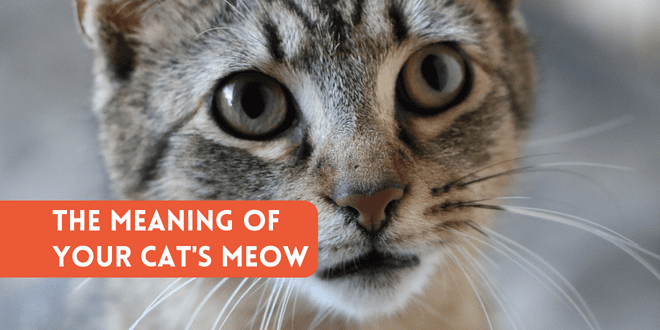
Cats communicate to humans in so many ways but the one way that almost always gets our attention is the meow. Of course there are lots of other vocalizations cats do that are usually quite easy to interpret such as the growl, hiss, and spit. Whenever your cat growls or hisses at you there’s an excellent chance you understand those sounds to mean kitty is definitely not happy.
Meow has Many Meanings
The meow, however, can have so many different meanings and it can sometimes be difficult for a cat parent to interpret just what it is kitty is requesting. Many cat parents, however, have become excellent interpreters of their cats’ meows. They know by the specific sound whether it’s a request for food, play, affection, or to be left alone.
Meowing is Mostly Directed Toward Us
In cat-to-cat communication, adult cats rarely meow to each other. Kittens do more meowing as a way of saying they’re in need of something or are in trouble. Kittens seem to address most of their meows toward the mother cat.
Once a cat becomes full-grown, meowing to other cats takes a backseat to body language, visual marking, and scent marking/communication. Cat-to-cat vocalization tends to occur more often in hostile situations where a growl, hiss, or spit are needed because the visual marking, scent marking, and body language haven’t succeeded in keeping an opponent at bay.
https://catbehaviorassociates.com/buy-pams-books/
The meow seems to be a communication method directly mostly at humans. The reason is most likely because it works. Cats are very smart and quickly learn if a meow got a desired result the first time, it will get the result every time thereafter. Additionally, because we’re such a verbal species, we seem to respond best when our cats meow to us over other forms of communication. That fact is proven over and over again as humans are repeatedly scratched or bitten because they misread their cats’ body language signals.
Some cats are more vocal than others and some breeds (such as the Siamese) really know how to turn meowing into an art form. The more vocal cat breeds will pretty much conduct a running narrative of everything they do throughout the day.
When Meow Becomes Annoying
We also reinforce the meowing behavior because we often respond quickly. If the cat meows and we know what he wants, we typically supply it right away – whether it’s some petting under the chin, a play session or refilling the empty food bowl. Even if we don’t supply what the cat is asking for we often still reinforce the behavior by giving attention. If your cat is meowing and it’s becoming annoying to you, chances are you’ll tell the cat to quiet down or pet him just to shut him up. When you respond to unwanted meowing you reinforce his attention-seeking behavior.
Meow Warning Signs
If you have a cat who displays an increase in vocalization it can indicate an underlying medical problem. Some older cats, especially ones who are experiencing age-related cognitive dysfunction, may begin meowing or even yowling at night when the house is dark and quiet. If your older cat has begun nighttime meowing, it’s time for a veterinary check-up.
If your cat meows at night because he’s bored, his environment is quiet and there’s no one awake to play with him, make sure you conduct a good interactive play session right before bed and then offer him a food reward. You can also set out some puzzle feeders and other activity toys to keep him busy while you sleep.
Need More Information?
For more specifics on dealing with meowing behavior or nighttime activity, refer to the best-selling books by Pam Johnson-Bennett. Pam’s books are available at bookstores and also online. We’ve included links to Amazon here on our website.
If you have a question regarding your cat’s behavior or health, please contact your veterinarian. This article is not intended as a replacement for your cat’s veterinary care. This article is for information purposes only and not offering medical advice or providing a medical diagnosis.
 Problem Solving & Advice by Pam Johnson-Bennett Cat Behavior Expert & Best-selling Author
Problem Solving & Advice by Pam Johnson-Bennett Cat Behavior Expert & Best-selling Author



